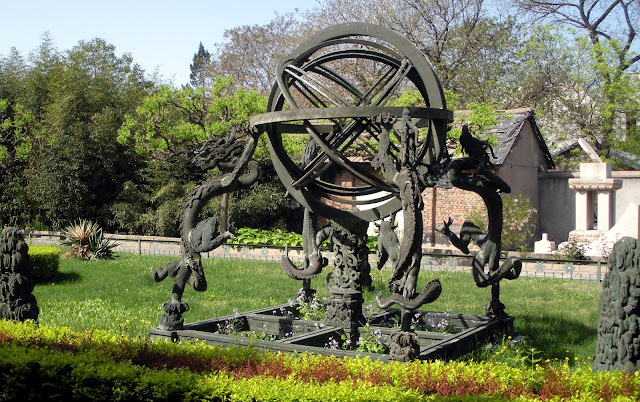 |
| Me and the collection of various astronomical instruments. The wall and platform behind me is the ancient observatory. |
 |
| The collection of instruments in 1925. |
 |
| A European drawing of the observatory from 1737. |
For many years these instruments were the most advanced in the world. Most were designed by a Jesuit Missionary in the 1670s for the emperor of China. Since they were for the emperor a lot of work went into the bronze casts. Many of the instruments have dragons on the bases to show the connection between the emperor and the specialized field of astronomy. In 1900 when the 8 foreign armies invaded Beijing the observatory was looted. All of the ornate bronze instruments were carries off by soldiers. For a year several pieces stayed in front of the French embassy in Beijing while others were carried off to Germany. It wasn't until 1921 that all of the astronomical instruments were returned.
 |
| The stolen instruments on display in front of Potsdam Palace in Germany. |
 |
| One of the carved stones around the instruments. |
 |



No comments:
Post a Comment